Related Research Articles

Malayalam is a Dravidian language spoken in the Indian state of Kerala and the union territories of Lakshadweep and Puducherry by the Malayali people. It is one of 22 scheduled languages of India. Malayalam was designated a "Classical Language of India" in 2013. Malayalam has official language status in Kerala, Lakshadweep and Puducherry (Mahé), and is also the primary spoken language of Lakshadweep. Malayalam is spoken by 35 million people in India. Malayalam is also spoken by linguistic minorities in the neighbouring states; with a significant number of speakers in the Kodagu and Dakshina Kannada districts of Karnataka, and Kanyakumari, Coimbatore and Nilgiris district of Tamil Nadu. It is also spoken by the Malayali Diaspora worldwide, especially in the Persian Gulf countries, due to the large populations of Malayali expatriates there. They are a significant population in each city in India including Mumbai, Bengaluru, Chennai, Delhi, Hyderabad etc.

Kasaragod is a municipal town and administrative headquarters of Kasaragod district in the state of Kerala, India. Established in 1966, Kasaragod was the first municipal town in the district. It is the northernmost district of Kerala and is also known as Sapta Bhasha Sangama Bhumi.

Portuguese creoles are creole languages which have Portuguese as their substantial lexifier. The most widely-spoken creoles influenced by Portuguese are Cape Verdean Creole, Guinea-Bissau Creole and Papiamento.

The Daman and Diu Portuguese Creole, Portuguese: Língua Crioula de Damãon e Dio & by its speakers as Língua da Casa meaning "home language", refers to the variety of Indo-Portuguese creole spoken in the Dadra and Nagar Haveli and Daman and Diu, in the northern Konkan region of India. Before the Indian annexation of the territory, the creole spoken by the Damanese natives underwent a profound decreolisation in the erstwhile Portuguese Goa and Damaon colony, a phenomenon whereby the Indo-Portuguese creole reconverged with European Portuguese.
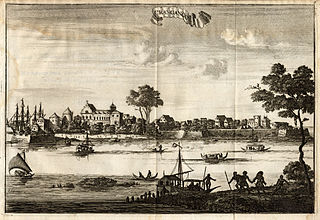
Kodungallur (IPA:[koɖuŋːɐlːuːr]; formerly also called as Cranganore (anglicised name), Portuguese: Cranganor; Mahodayapuram, Shingly, Vanchi, Muchiri, Muyirikkode, and Muziris) is a historically significant town situated on the banks of river Periyar on the Malabar Coast in Thrissur district of Kerala, India. It is 36 kilometres (22 mi) north of Kochi (Cochin) by National Highway 66 and 38 km (24 mi) from Thrissur. Kodungallur, being a port city at the northern end of the Kerala lagoons, was a strategic entry point for the naval fleets to the extensive Kerala backwaters.
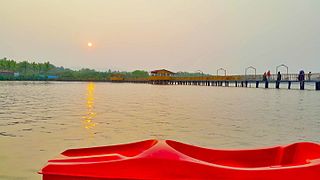
Kannur is one of the 14 districts along the west coast in the state of Kerala, India. The city of Kannur is the district headquarters and gives the district its name. The old name, Cannanore, is the anglicized form of the Malayalam name "Kannur". Kannur district is bounded by Kasaragod District to the north, Kozhikode district to the south, Mahé district to the southwest and Wayanad District to the southeast. To the east, the district is bounded by the Western Ghats, which forms the border with the state of Karnataka. The Arabian Sea lies to the west. Paithalmala is the highest point in Kannur District (1,372m). Enclosed within the southern part of the district is the Mahé district of the Union Territory of Puducherry. The district was established in 1957.

Malabar Muslims or Muslim Mappilas are members of the Muslim community found predominantly in Kerala and the Lakshadweep islands in Southern India. The term Mappila (Ma-Pilla) is used to describe Malabar Muslims in Northern Kerala. Muslims share the common language of Malayalam with the other religious communities of Kerala.
Sri Lanka Indo-Portuguese, Ceylonese Portuguese Creole or Sri Lankan Portuguese Creole (SLPC) is a language spoken in Sri Lanka. While the predominant languages of the island are Sinhala and Tamil, the interaction of the Portuguese and the Sri Lankans led to the evolution of a new language, Sri Lanka Portuguese Creole (SLPC), which flourished as a lingua franca on the island for over 350 years (16th to mid-19th centuries). SLPC continues to be spoken by an unknown number of Sri Lankans, estimated to be extremely small.
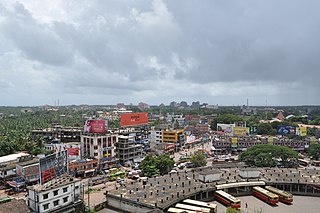
Kannur, formerly known in English as Cannanore, is a municipal corporation in the state of Kerala, India. It is the administrative headquarters of the Kannur district and situated 274 kilometres (170 mi) north of the major port city and commercial hub Kochi and 137 kilometres (85 mi) south of the major port city and a commercial hub, Mangalore. During the period of British colonial rule in India, when Kannur was a part of the Malabar District, the city was known as Cannanore. Kannur is the fifth largest urban agglomeration in Kerala. As of 2011 census, Kannur Municipal Corporation, the local body which administers mainland area of city, had a population of 232,486.
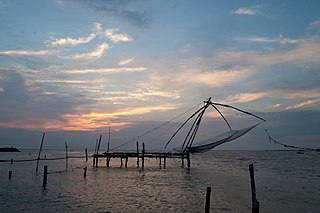
Fort Kochi, formerly known as Fort Cochin or British Cochin, is a region of Kochi city in Kerala, India. Fort Kochi takes its name from the Fort Manuel of Kochi, the first European fort on Indian soil, controlled by the Portuguese East Indies. This is part of a handful of water-bound islands and islets toward the south-west of the mainland Kochi, and collectively known as Old Kochi or West Kochi. Adjacent to this is the locality of Mattancherry. In 1967, these three municipalities along with a few adjoining areas, were amalgamated to form the Kochi Municipal Corporation.

Malabar District, also known as British Malabar or simply Malabar was an administrative district on the southwestern Malabar Coast of Bombay Presidency (1792–1800), Madras Presidency (1800–1950) and finally, Madras State (1950–1956) in India. It was the most populous and the third-largest district in the erstwhile Madras State. The historic town of Kozhikode was the administrative headquarters of this district.

The Mardijker people refer to an ethnic community in the Dutch East Indies made up of descendants of freed slaves who spoke or is culturally Portuguese. They could be found at all major trading posts in the East Indies. They were mostly Christian, of various ethnicities from conquered Portuguese and Spanish territories, Some are of European ethnicity, while some others are natives from various Portuguese controlled teritories. They spoke Mardijker Creole, a Portuguese-based creole, which has influenced the modern Indonesian language.

Islam arrived in Kerala, the Malayalam-speaking region in the south-western tip of India, through Middle Eastern merchants. The Indian coast has an ancient relation with West Asia and the Middle East, even during the pre-Islamic period.
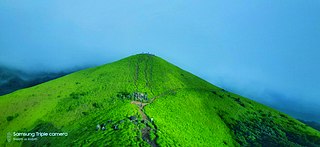
Kasaragod (Malayalam:[kaːsɐrɡoːɖɨ̆] is one of the 14 districts in the southern Indian state of Kerala. Its northern border Thalappady is located just 9 km south to Ullal, which is the southernmost portion of the major port city Mangalore, on the southwestern Malabar coast of India.
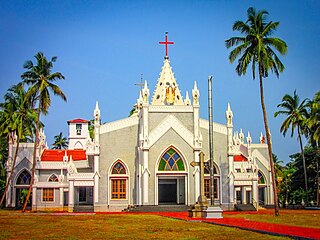
Pope John Paul II created the Diocese of Kannur in the Ecclesiastical Province of Verapoly in India by bifurcating the Diocese of Calicut on 9 December 1998. The diocese consists of the Latin Catholics of Malabar residing in the revenue districts of Kannur and Kasaragod.

North Malabar refers to the geographic area of southwest India covering the state of Kerala's present day Kasaragod and Kannur districts, Mananthavady taluk of Wayanad district, and the taluks of Vatakara and Koyilandy in the Kozhikode District of Kerala and the entire Mahé Sub-Division of the Union Territory of Puducherry. Traditionally North Malabar has been defined as the northern portion of the erstwhile Malabar District which lies between Chandragiri River and Korapuzha River. The region between Netravathi River and Chandragiri River, which included the portions between Mangalore and Kasaragod, are also often included in the term North Malabar.

Luso-Indians, or Portuguese-Indian, is a subgroup of the larger Eurasian multiracial ethnic creole people of Luso-Asians. Luso-Indians are people who have mixed Indian and Portuguese ancestry or people of Portuguese descent born or living or originating in former Portuguese Indian colonies, the most important of which were Goa and Damaon of the Konkan region in the present-day Republic of India, and their diaspora around the world, the Anglosphere, Lusosphere, the Portuguese East Indies such as Macao, etc.
Cochin Indo-Portuguese, also known as Vypin Indo-Portuguese from its geographic centre, is an Indo-Portuguese creole spoken on the Malabar coast of India, particularly in Fort Cochin, in the state of Kerala. The last person who spoke it as a first language, William Rozario, died in 2010. It is now spoken by Christian families in an around Vypeen Island and other areas of the Kochi metropolitan area.

Kannur, formerly known in English as Cannanore, Arabic as Kannanur, and Portuguese as Cananor, is a city and a Municipal Corporation in North Malabar region, state of Kerala, India. It is the largest city in North Malabar, which is the northernmost region of Kerala. It is sometimes identified Kolathunadu, which was ruled by the Kolathiris. In the 12th and 13th centuries there was trade with Persia and Arabia.
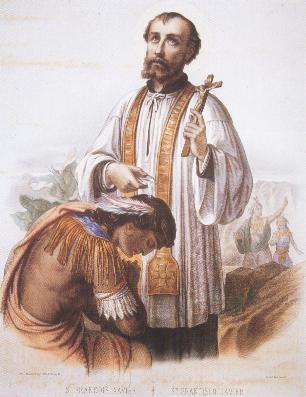
The Latin Catholics of Malabar Coast, also known as Malabar Latin Catholics or Latin Christians of Kerala are a multi-ethnic religious group in Kerala adhering to the Roman Rite liturgical practices of the Latin Church, on the Malabar Coast, the southwestern coast of India. Ecclesiastically, they constitute the ecclesiastical provinces of Verapoly and Trivandrum. They are predominantly Malayali people and speak the Malayalam language, though a subgroup of Luso-Indians speaks the Cochin Portuguese Creole. They trace their origins to the evangelization of Malabar Coast by the Dominican, Franciscan, Jesuit and Carmelite missionaries, mainly French and Portuguese.
References
- 1 2 Hugo Cardoso, "The Death of an Indian-born Language", Open Magazine, October 30, 2010.
- 1 2 J. Clancy Clements, , Notes on the phonology and lexicon of some Indo-Portuguese creoles, 2012.
- ↑ https://archive.org/details/tr ueexactdescrip00bald/page/n13/mode/2up
- ↑ Cardoso, Hugo. 2019. The Indo-Portuguese creoles of the Malabar: Historical cues and questions. In Pius Malekandathil, Lotika Varadarajan & Amar Farooqi (eds.), India, the Portuguese, and maritime interactions: Religion, language and cultural expression, vol. 2, 345–373. Delhi: Primus Books.